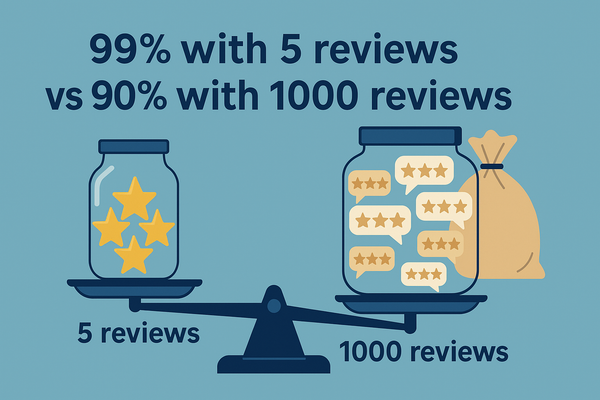My Incomplete Mental Models on Thinking About A Business

Countless mental models exist for dissecting a business, but theory is cheap. Their real power emerges only when they are forged in the fires of your own experience. The frameworks I unpack below are the ones I turn to again and again. They are designed for the moment you’re starting from zero—whether that’s launching a startup, spinning up a new business line, or releasing a product into a crowded portfolio. My focus here is purely on strategy; the equally vital questions of organizational design and people management are for another day.
1. Unit Economics: If it doesn't work on paper, it won't work in reality.
Unit economics measure a company's profit and loss on a per-unit basis, such as per customer acquired or per item sold. A new business, especially in its infancy, must be obsessed with profitability to survive.
I’ve sat in too many meetings where new ventures were discussed with boundless optimism, only to realize rounds later that the fundamental math didn't work. To avoid this, you must understand not only your own unit economics but also those of your competitors. In fact, I’d argue that the best way to build your model from scratch is to benchmark it against the competition. This exercise helps you answer critical questions:
- What is the margin profile of this market? Is it inherently a low-margin or high-margin business?
- If it's low-margin, can you fundamentally alter the cost structure to improve profitability? Or is success purely a game of achieving massive scale?
- If it's high-margin, can you enter with a similar margin to capture a foothold? Or could you strategically lower your margin to aggressively gain market share?
- What are the hidden revenue streams and costs? Sometimes, we are trapped by our own assumptions. If a competitor's unit economics appear unsustainable, resist the urge to dismiss them. Assume they aren't stupid. This forces you to dig deeper and uncover the hidden mechanics of their business model.
- Where are the biggest levers? What are the largest revenue and cost drivers in the industry? Can you innovate on any of them to create an advantage?
- How will the economics evolve? Finally, you must envision how your unit economics will change with scale and time. What improves? What gets worse?
2. Long Tail vs. Short Head: Finding Your Entry Point
Every entrepreneur faces the market opportunity paradox: if a market is huge and obvious, it’s already teeming with sharks. So, where do you start?
We often talk about finding product-market fit (PMF), but with infinite combinations of supply and demand, the search can feel overwhelming. The key is to recognize that PMF isn't a single point; it's a spectrum. A one-size-fits-all product rarely satisfies a market's diverse needs perfectly. People's demands are similar, but they are also different.
My thesis is that most successful new businesses begin by serving the long tail—customers with needs that are related to, but distinct from, the mainstream short head. Here’s why this approach works:
- Truly novel demand is rare. Therefore, most new ventures solve a variation of an existing problem.
- Head-on competition is brutal. The short head is often dominated by a few entrenched players with massive resources.
- The long tail is fertile ground. Major players often ignore these niche segments because the immediate reward is smaller than focusing on their core market. What is a rounding error for them can be a lifeline for a new venture.
- It’s a launchpad for growth. Once you establish a beachhead in the long tail, you are better equipped and resourced to challenge competitors for the short head.
- The future shifts. Over time, today's long-tail demand can become tomorrow's mainstream.
3. Game Theory: Mapping the Multiplayer Game
Business isn't a monologue; it's a multiplayer game with a cast of characters—customers, competitors, suppliers, regulators—often with conflicting interests. It is essential to map out this ecosystem and understand each player's incentives.
Ask yourself: Why do middlemen or legacy sales channels still exist? How did the market reach its current equilibrium, whether it's a monopoly or a duopoly?
For every action you plan, you must model the likely reactions of others and how those reactions, in turn, affect your original plan. This isn't just about defense; it's about offense. Is there a better equilibrium state you can engineer? Can you make a move that shifts the entire system to your advantage?
4. Fact Triangulation: Staying Sane in the Chaos
Starting something new requires a dose of what might look like insanity to an outsider. This optimism makes it dangerously easy to succumb to confirmation bias. I have seen promising ventures crumble because the founders ignored contradictory facts.
To stay tethered to reality, I find these habits indispensable:
- Document everything. Keep a log of every data point and fact, noting its source, your confidence level in it, and a timestamp.
- Actively seek dissent. Hunt for counterexamples and contradictory evidence. Ask "What would have to be true for this entire idea to fail?"
- Triangulate your data. Never rely on a single source. Validate critical information from multiple, independent points of view.
- Carve out time for rational analysis. Set aside solitary time to review the facts without emotion or groupthink. This is when you strip everything down and make your most objective judgments.
Being rational doesn't mean sacrificing the passion needed to build something great. The goal is to channel that excitement, grounding it in a rigorous understanding of reality. You need the fire to stay motivated and the cold, hard logic to find the truth.




